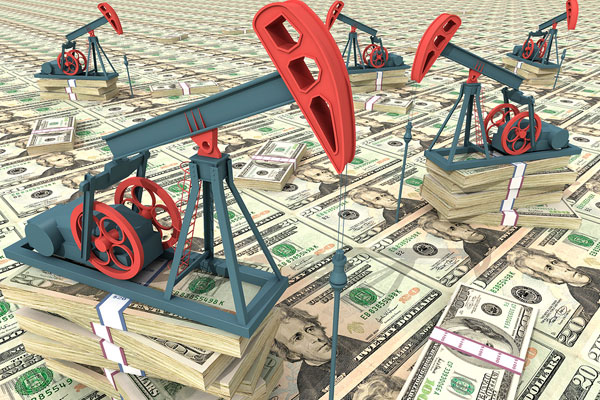
Oil markets may tighten much faster than
anticipated, say analysts.
Oil bull market seen as Brazil, Iraq cut output targets
LONDON, July 1, 2015
Massive downward revisions to oil output in Brazil and Iraq have increased the risks for oil markets of going from the current feast to famine within just a few years, leading to a price spike that would give a new boost to the US shale industry.
Brazil and Iraq had been expected to add over 2 million barrels per day to global supply by 2020 and another 2.5 million by 2025, becoming the two biggest contributors to help meet rising global demand, according to the long-term forecast of the International Energy Agency.
With Brazil's Petrobras cutting this week its five-year production outlook by 1.4 million bpd in response to low oil prices and the ongoing corruption probe and Iraq renegotiating deals with oil majors to reflect "more realistic" output targets, the current glut in the oil markets is poised to end sooner than expected.
"All these project cancellations and deferral and cut backs are setting the world up for tighter oil markets in the medium term (2017-19) unless the record Middle East oil rig count successfully translates into significantly higher production," said Seth Kleinman from Citi.
"Demand will have its say but from a supply perspective it is hard not to believe the seeds of the next price spike are being sown today," Deutsche Bank said in a note on Tuesday.
To put the Petrobras revision in prospective - the 1.4 million bpd figure almost equates to the current global oversupply, which arose due to a US shale oil boom and a decision by Opec to keep its taps fully open to battle for market share with rival producers.
With 2015 global oil demand surprising on the upside and likely to exceed its average growth of around 1 million bpd a year over the past decade, the glut is expected to clear by the middle or the end of 2016.
Beyond 2016, the balanced market may not last long.
Only a year ago, the IEA saw Brazil pumping 3.7 million bpd by 2020 and Iraq some 4.6 million. On Monday, Petrobras, responsible for most of the country's output, said it will pump only 2.8 million by 2020.
Sources at oil majors working in Iraq, which has been producing an average of 3.5 million bpd this year, say they will struggle to raise output steeply after agreeing large spending cuts with Baghdad, which still aspires to see production at 5.5-6.0 million within five years.
BULL MARKET
Several oil industry heavyweights, including former BP boss Tony Hayward, have predicted a new bull market could arrive sooner than expected given the scale of capital and workforce withdrawal from the US oil industry.
US oil output growth has indeed stalled in recent months as companies drastically cut the number of drilling rigs following a steep fall in oil prices after Opec decided against cutting output last November.
The irony for Opec, though, could be that it might ultimately win the market share battle against most competitors but not the United States, where output from shale formations run by hundreds of independent firms can be switched on and off much quicker than in giant offshore projects such as in Brazil.
"I call this the shale wagging the dog scenario - as shale can work in a prices below $70 per barrel but much of the rest of the industry does not... It is a bullish scenario for 2017/18 time period," said Citi's Kleinman.
Downward revisions of output figures for Brazil and Iraq follow repeated warnings from the IEA that the breathing space provided by the rise in non-Opec output was in many respect illusory, given the long-lead time of new projects.
On Tuesday, the IEA, which made a downward revision of its production outlook for Brazil back in February, said it was still assessing the latest announcements.
But the developments will likely further strengthen the agency's belief that Opec would need to produce much more crude to balance the markets.
"Slower production growth as a result of spending cuts will leave more space for Opec, several of whose members have been holding or even increasing upstream investment and boosting their rig count even as their non-Opec counterparts have been going the other way," said IEA chief oil analyst Antoine Halff.
The IEA's long-term outlook sees the need for Opec crude to rise by 6 million bpd in the 2020s and by the same amount again by 2030 - effectively meaning the world needs to add another Saudi Arabia to its supply.
In the shorter run, demand growth is simply poised to outstrip supply without prices rising above $60 per barrel to encourage higher-cost supplies, such as oil sands and deepwater, to balance the market, according to US-based consultancy PIRA. – Reuters







